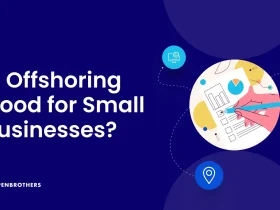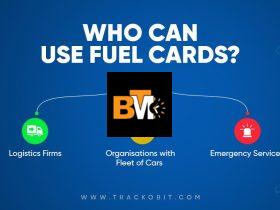Securing a steady stream of clients is no small feat in the competitive building industry. Whether you’re a sole trader or managing a large construction firm, relying on word of mouth or outdated methods simply won’t cut it anymore. The landscape has shifted, and those who adapt are the ones who thrive.
Lead generation is all about attracting and keeping the right clients. With the growing demand for skilled builders across the UK, you need strategies that position your business as the go-to choice. By leveraging modern tools and techniques, you can ensure your pipeline never runs dry, giving you the freedom to focus on what you do best: building.
Importance Of Lead Generation For Builders
Securing high-quality leads defines the success of your building business. Without a reliable pipeline of potential clients, your projects might slow, your workforce might stagnate, and your reputation might struggle. Lead generation ensures continuity so your building expertise benefits more clients consistently.
Clients today have access to countless builders, often searching online for expertise, reviews, or unique offerings. If your business isn’t visible when they search, they might not choose you. By focusing on lead generation, you position yourself as accessible and proactive, meeting clients halfway before they even contact you.
The right leads impact more than just revenue. They connect you with opportunities that align with your skills, such as specialised renovations or large-scale builds. These projects enhance your portfolio and strengthen client trust. Would you rather take on projects that don’t match your expertise or ensure your time maximises value?
Lead generation can also buffer against market fluctuations. As seasons and demand change, consistent leads prevent the downtime that affects many builders. The effort you dedicate to generating leads now secures future growth. Doesn’t steady work save your business from financial uncertainty?
Do you focus on traditional referrals, or have you embraced digital tools? Targeted advertising, search engine optimisation, and email campaigns provide unmatched precision. By adopting these, your business attracts leads most likely to convert. Are your current methods giving you this level of quality?
With competition intensifying, lead generation distinguishes your business from others. It communicates your strengths, whether that’s exceptional craftsmanship or efficient timelines. A steady flow of leads doesn’t just sustain operations, it elevates your brand as a dependable choice within the industry.
Top Strategies For Effective Lead Generation
Effective lead generation keeps your building business relevant and competitive. Using a mix of digital tools and strategies, you can attract clients who need your specific skills.
Utilising Digital Marketing
Digital marketing opens doors to high-value leads, and often relies on specific keyword searches such as “construction leads Australia”, which is why you should optimise towards building your online presence around them. Your website, often the first encounter for clients, reflects your credibility. User-friendly design paired with compelling content, like project case studies, builds trust. Add paid ads to target niche audiences. Campaigns that focus on geographic areas or specific services help bring in the right inquiries. Email marketing works well, too. Newsletters featuring updates, blogs on industry trends, and special offers can pull in leads over time. Use analytics to refine these efforts.
Leveraging Social Media Platforms
Social media platforms encourage direct engagement with potential clients. Post lively updates about ongoing projects to highlight your expertise. Platforms like Instagram and Facebook can showcase your finished builds, providing a visual portfolio. Responding promptly to comments and messages can foster trust. Run sponsored posts to extend your reach. Consider LinkedIn if you’re targeting commercial projects. Sharing client testimonials and expert advice here emphasises your credibility. Polls or Q&A sessions add interactive elements, keeping followers engaged.
Investing In Search Engine Optimisation (SEO)
Search engine optimisation ensures clients find you online. Focus on keywords related to local building services. Phrases like ‘renovation specialists in Manchester’ or ‘Oxford builder for extensions’ target users looking for specific expertise. Blog posts answering common queries—’what to expect during a home remodel’, for instance—can boost your site’s ranking. Faster page load speeds and mobile-friendly designs matter, too. Links from trusted local directories help build authority. Monitor your SEO results using tools like Google Analytics to adjust strategies.
Offline Methods For Lead Generation
Exploring offline strategies can open doors to connect with clients. These methods might feel traditional but remain essential in creating lasting impressions.
Networking And Community Engagement
Participating in local events places you directly in front of potential clients. Sponsoring a charity run or setting up a stall at a builders’ expo makes your business visible. Conversations at these events often lead to referrals, building trust within your community. What better way to show your commitment than aligning with local causes? You could join trade associations, attend their meetings, and establish yourself as a proactive professional. Staying active in your neighbourhood keeps you top of mind when projects arise.
Partnering With Suppliers And Contractors
Your network of suppliers and contractors offers more than materials and labour; it unlocks referral opportunities. Building strong relationships might encourage them to recommend your services to their clients. Sharing projects between trusted associates demonstrates reliability and professionalism. Do you share updates with them about your expertise or recent projects? If not, you could be missing out on creating new leads. These partnerships can increase visibility, showing others you’re part of a dependable network capable of delivering results.
Tools And Software To Boost Lead Generation
Using the right tools can transform your approach, turning potential clients into lasting partnerships. These solutions streamline processes, making lead generation more effective.
Customer Relationship Management (CRM) Tools
CRM tools organise your client information in one place, simplifying communication. With platforms like HubSpot or Salesforce, you track every interaction, storing details about potential projects. These tools give you insights through data, helping you focus effort where it’s most likely to succeed. For example, you can analyse which leads convert better, whether residential clients or commercial contractors. Automated follow-ups remove delays, strengthening connections. A CRM might even ensure no inquiry or follow-up email slips through the cracks, keeping your business responsive.
Lead Tracking And Analytics Software
Lead tracking software shows the journey leads take before reaching you. Tools such as Google Analytics or Leadfeeder reveal data, like how users find your website. By examining metrics—clicks, time-on-site, bounce rates—you spot trends. This software indicates which campaigns, SEO keywords, or lead magnets work best. Analytics reveal pain points in your conversion funnel, such as drop-offs during quote requests. When combining this data with actionable strategies, you fine-tune efforts for better results, ensuring your marketing budget improves engagement and ROI.
Measuring And Optimising Lead Generation Efforts
Tracking lead generation accurately shows where your efforts succeed or falter. Are inquiries from your website translating into contracts, or are leads slipping away before converting? Using data lets you untangle these patterns and pinpoint obstacles. Every missed opportunity costs, doesn’t it?
Examine your leads’ sources. Perhaps most inquiries come through social media, but very few convert to actual projects. Analyse engagement metrics, like click-through rates and form completions, to reveal gaps. Tools such as Google Analytics can trace where users drop off during their journey. Why tackle every channel equally if only a few drive results? Focus energy on what works.
Next, assess lead quality. Do your leads represent serious clients or quick queries with no real intent? High lead volumes mean little if no conversions follow. Define profiles for your “ideal” client. For builders, this could mean projects close to your location, services within your niche, and realistic timelines. Compare incoming leads against this standard. If misaligned, refine your targeting.
Review response times. Delays break trust before it develops. Are prospects waiting hours for a callback? They might approach competitors in the meantime. CRM systems like HubSpot can log and flag inquiries, ensuring you’re always quick to engage. Optimising first responses lays the foundation for stronger relationships.
Analyse conversion rates at each step of the funnel. How many initial enquiries lead to consultations? How often do consultations turn into signed contracts? Break this into percentages and look for weak links. A high consultation rate but low contract rate points to issues in proposal presentation or pricing. Small tweaks here could dramatically improve outcomes.
Test new strategies, but measure results closely. Introduce geo-targeted ads or adjust call-to-action phrases, then monitor whether these changes attract more relevant leads. A/B testing provides clarity by isolating successful tactics. Does one landing page version outperform another? Explore alternatives to maximise their impact.
Continuous optimisation demands checking back frequently. Are client preferences shifting over time? Seasonal patterns in service demand shift priorities too. Letting strategies stagnate risks shrinking opportunities. By refining methods regularly, you’ll ensure your pipeline remains steady and dependable. Your efforts should thrive, never stall.
To Conclude
Securing high-quality leads is essential for building a thriving and sustainable business in the competitive construction industry. By adopting a mix of modern digital tools and traditional methods, you can position your business as a trusted and accessible choice for clients.
Focusing on targeted strategies and leveraging technology ensures you’re connecting with the right projects while maintaining a steady workflow. Consistent optimisation of your approach helps you stay ahead of market trends and client needs, ultimately strengthening your reputation and boosting profitability.
Securing high-quality leads is essential for building a thriving and sustainable business in the competitive construction industry. By adopting a mix of modern digital tools and traditional methods, you can position your business as a trusted and accessible choice for clients. Whether it’s through a well-optimized website, active social media presence, or strong word-of-mouth referrals, visibility and credibility are key to standing out.







Leave a Reply